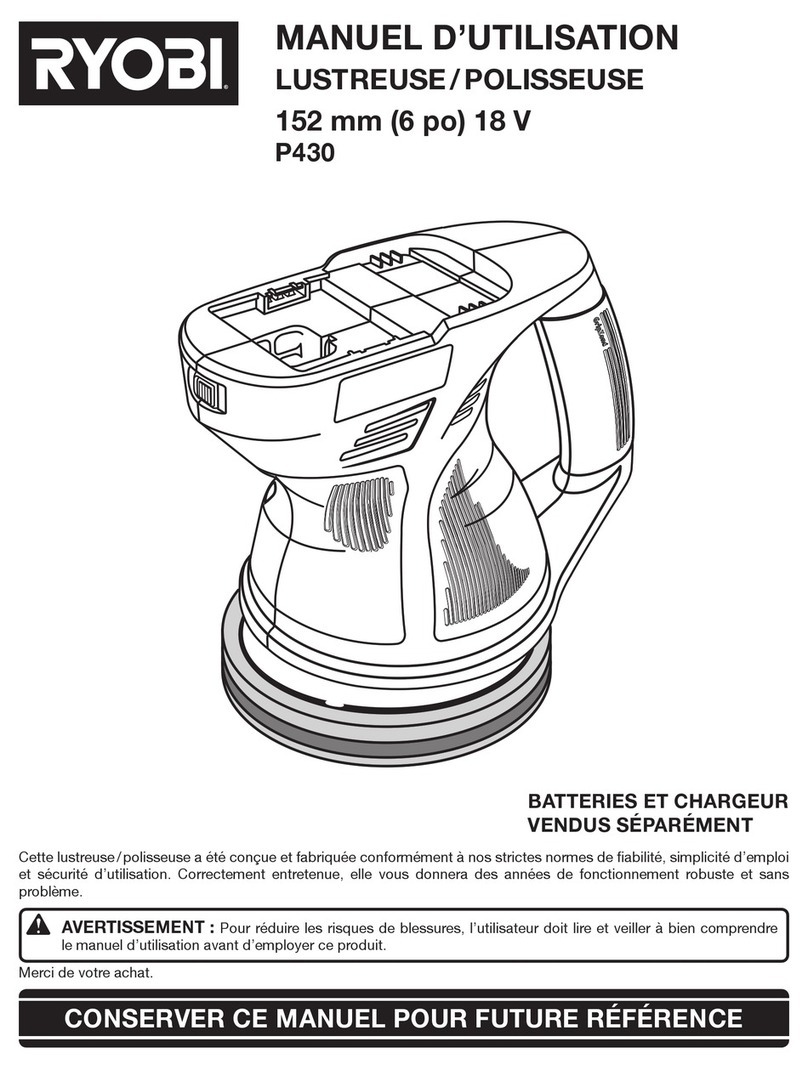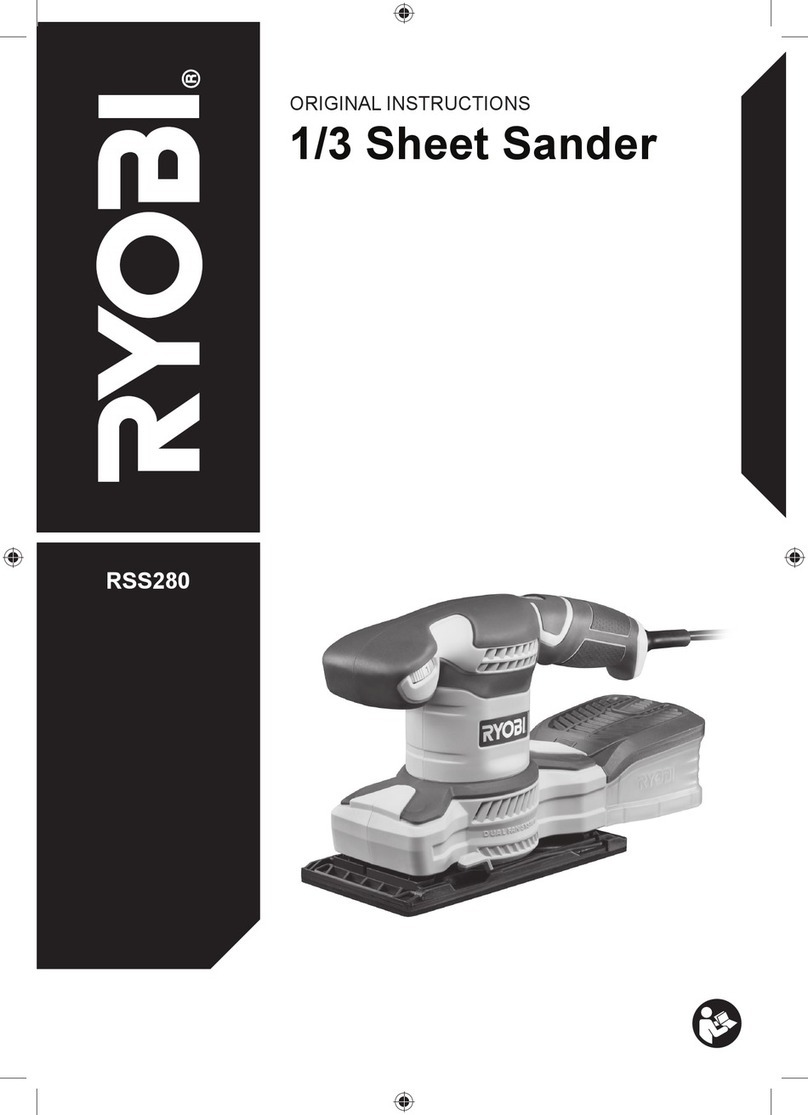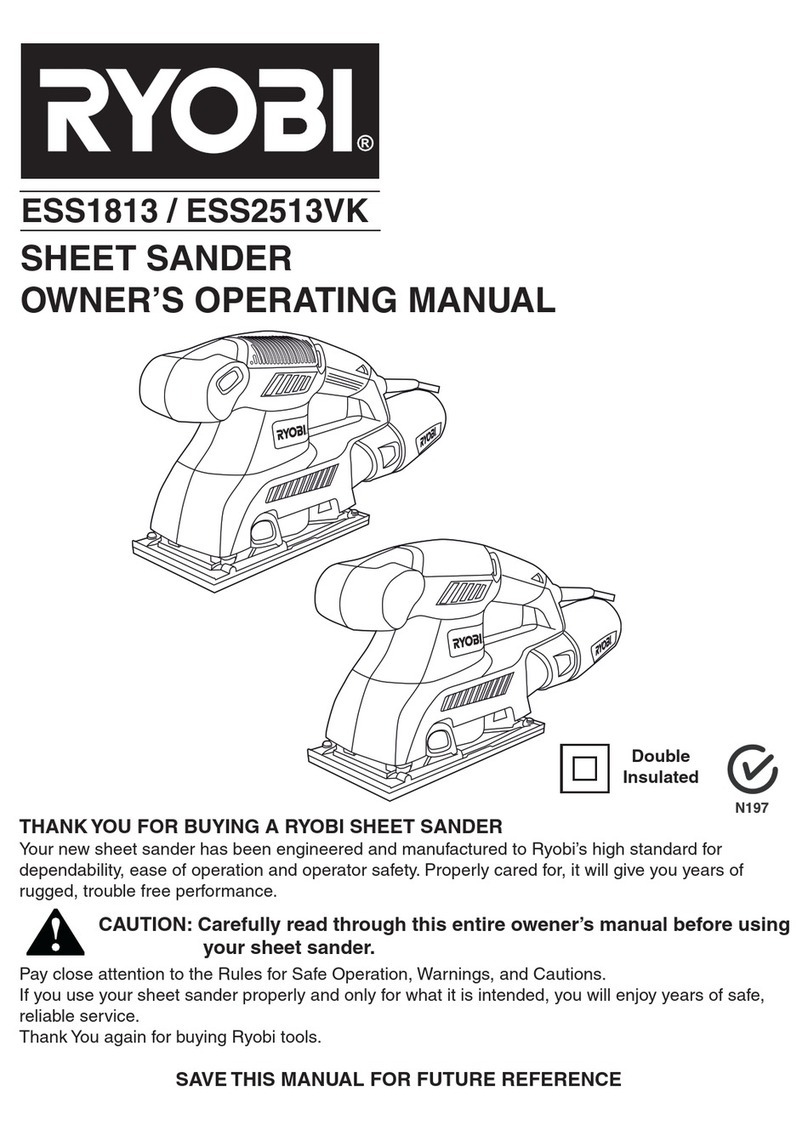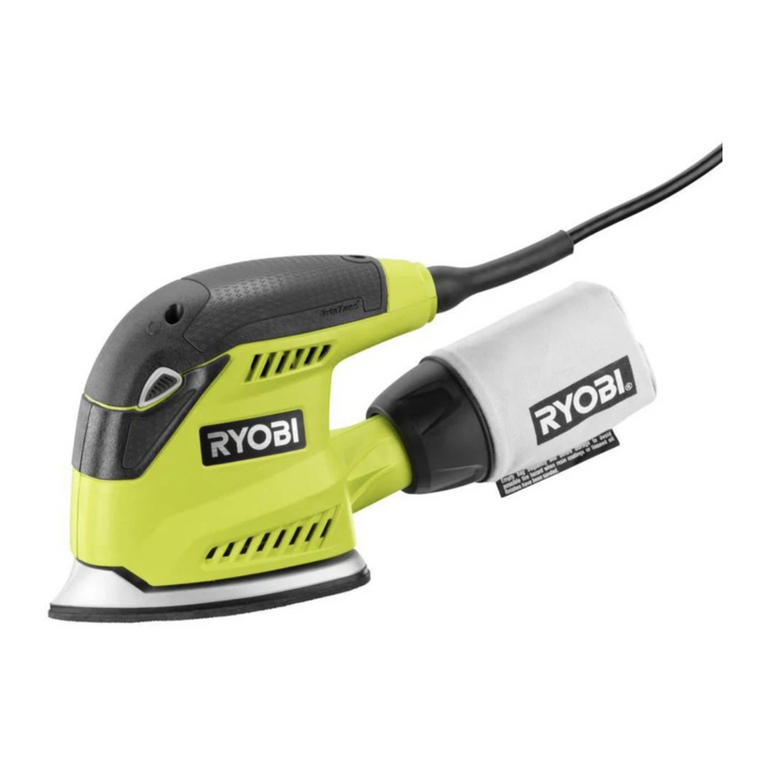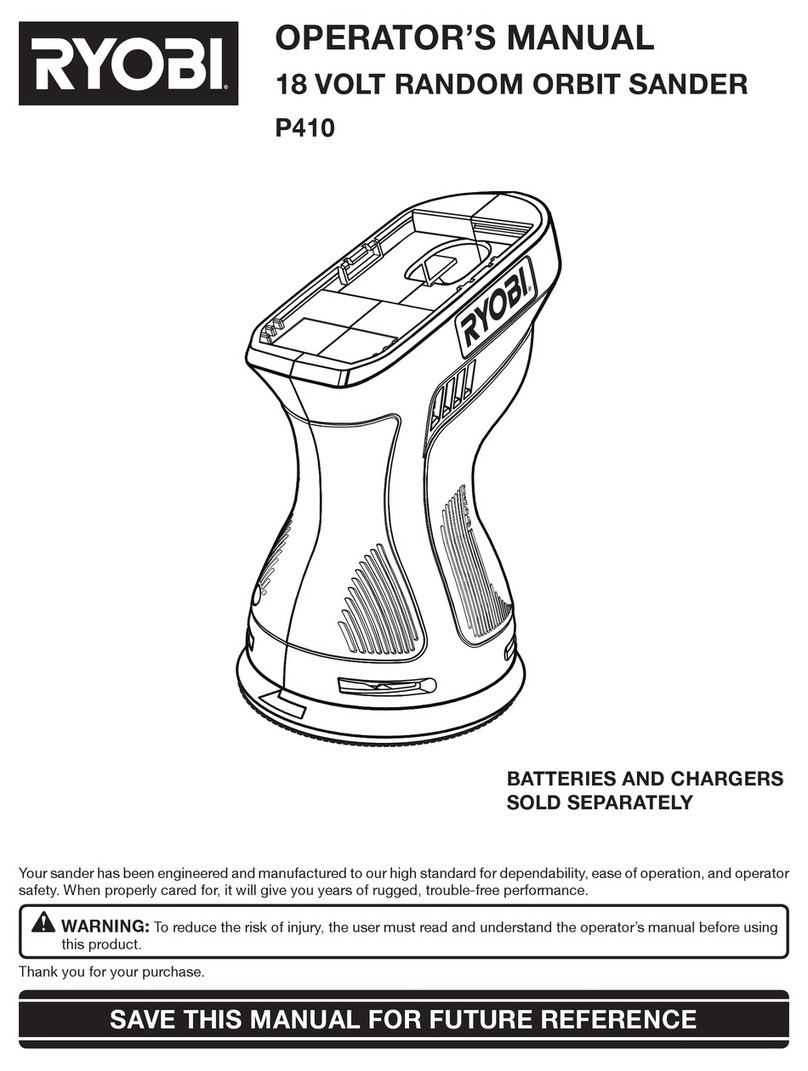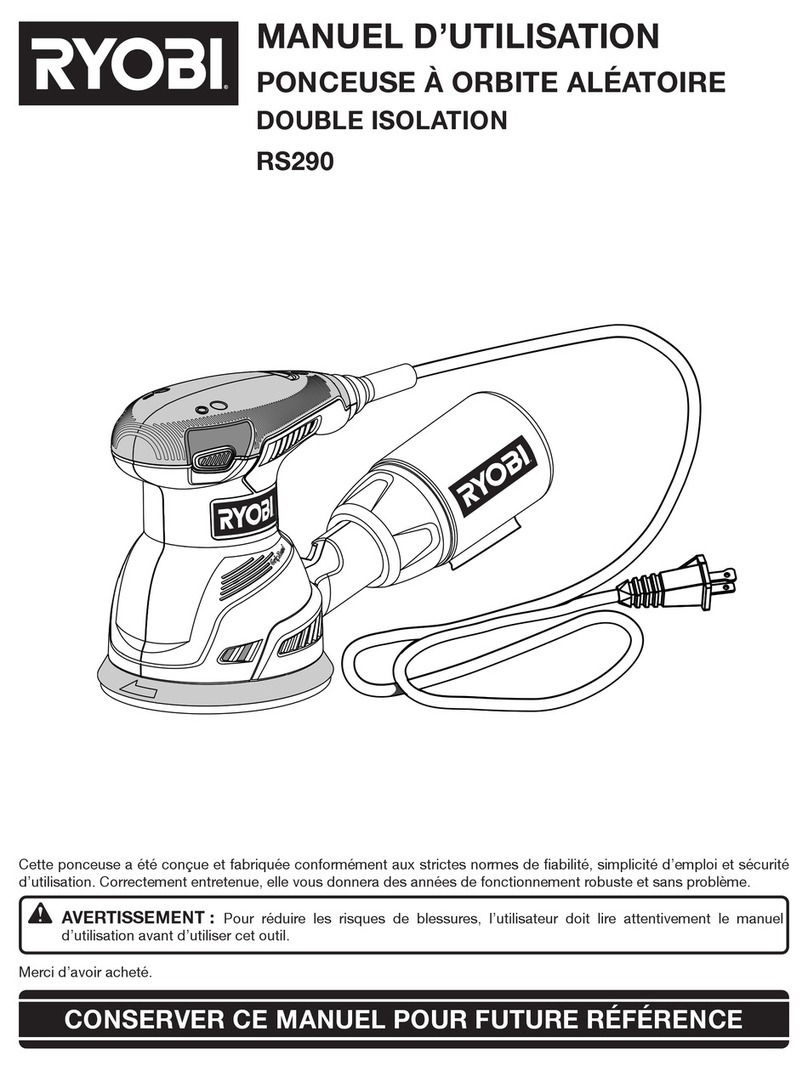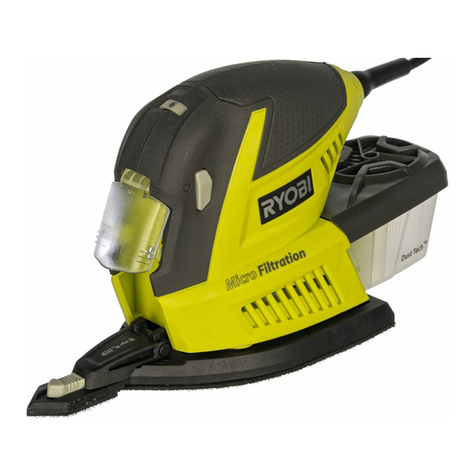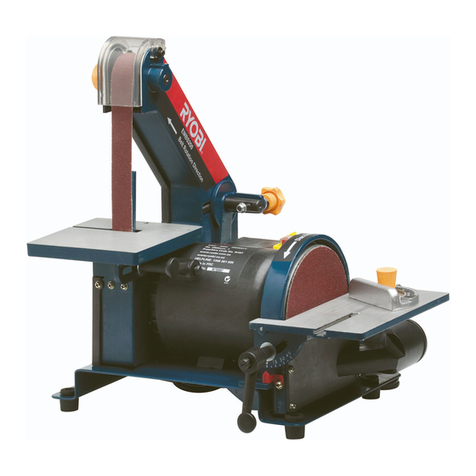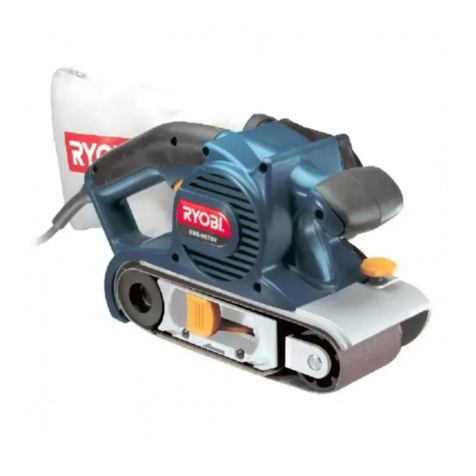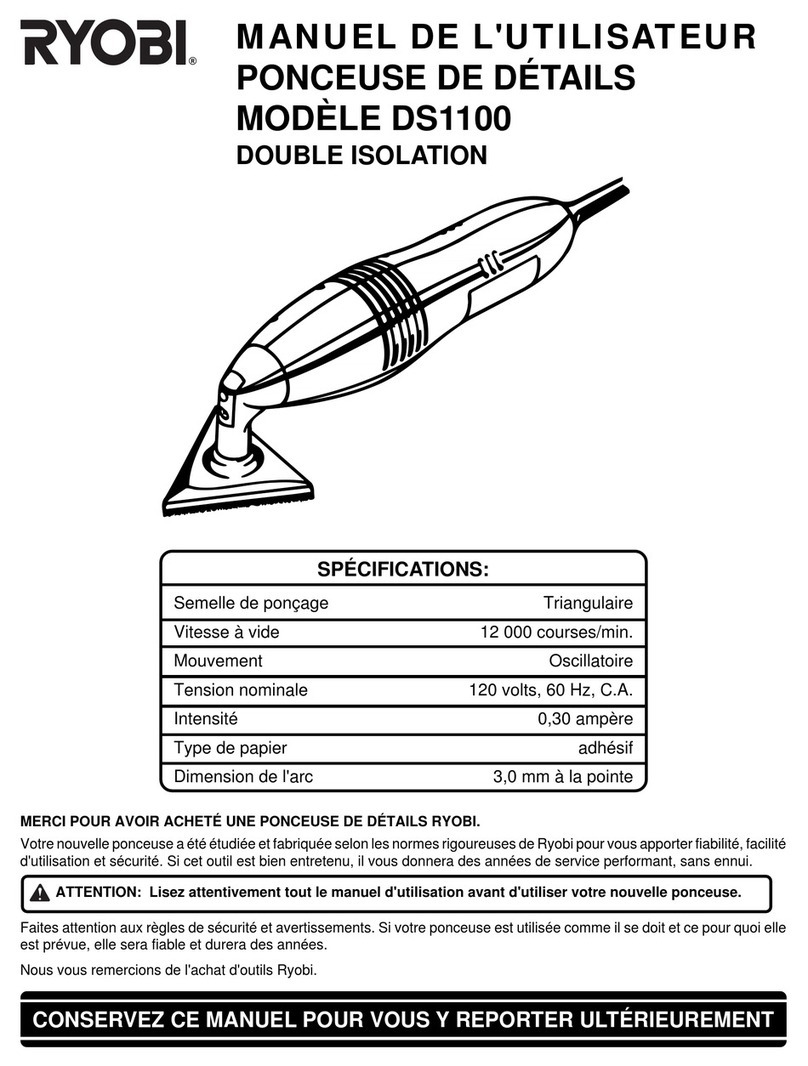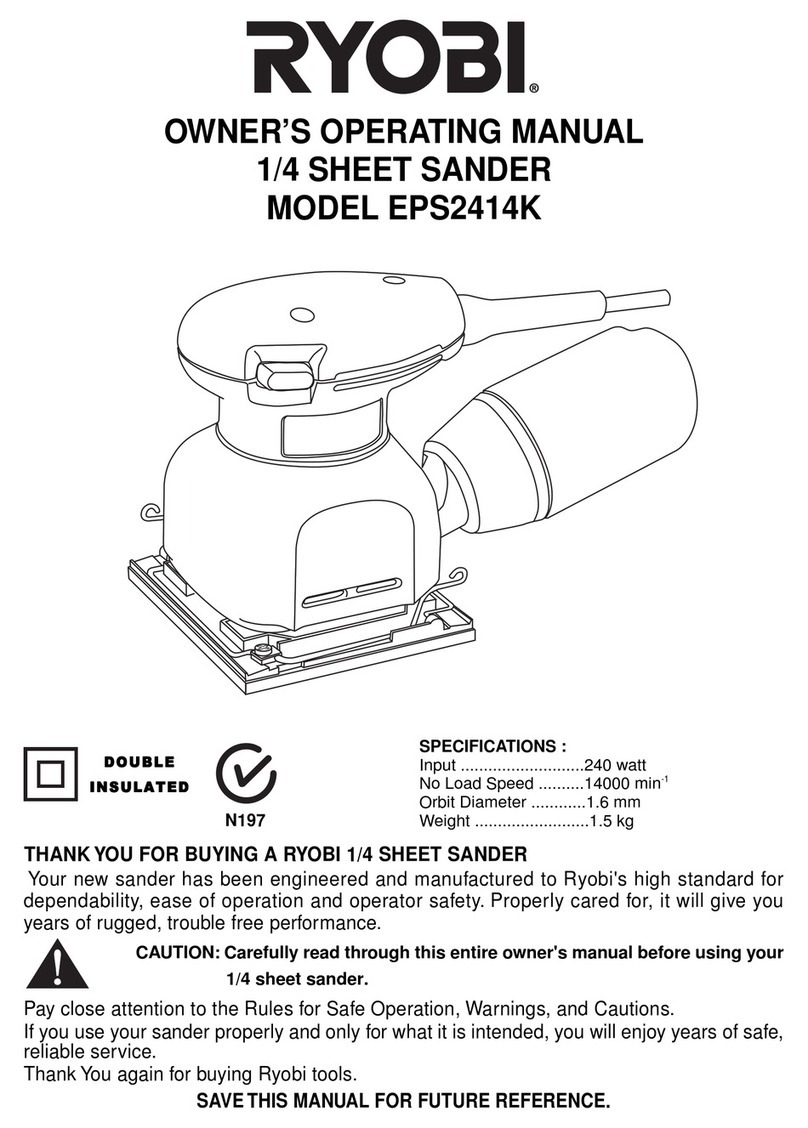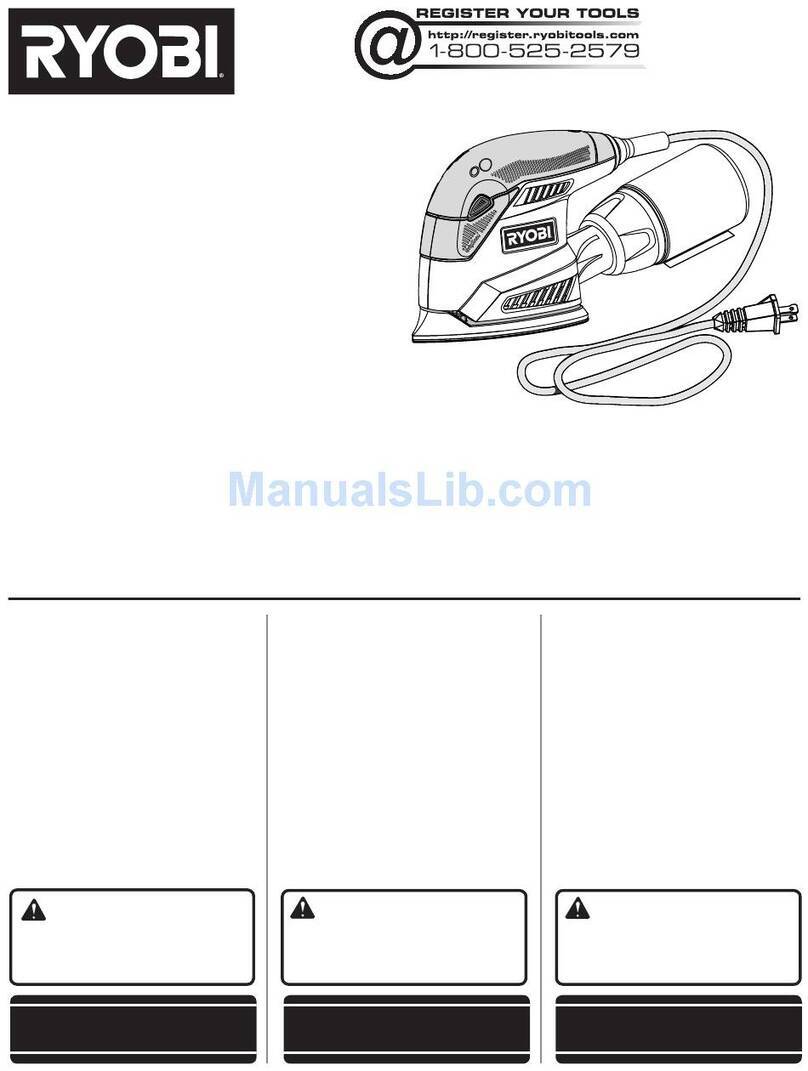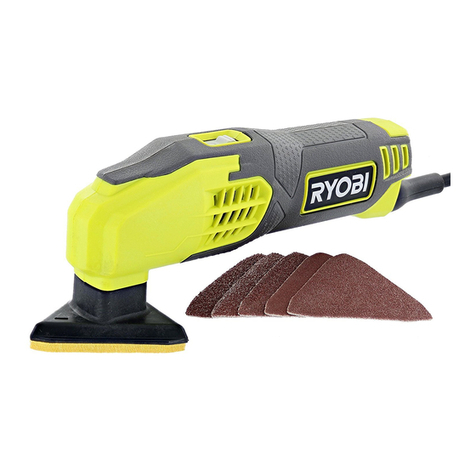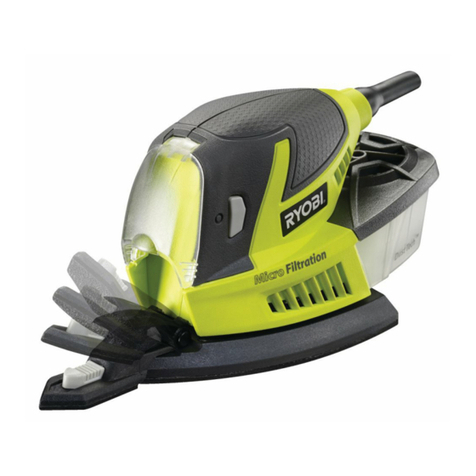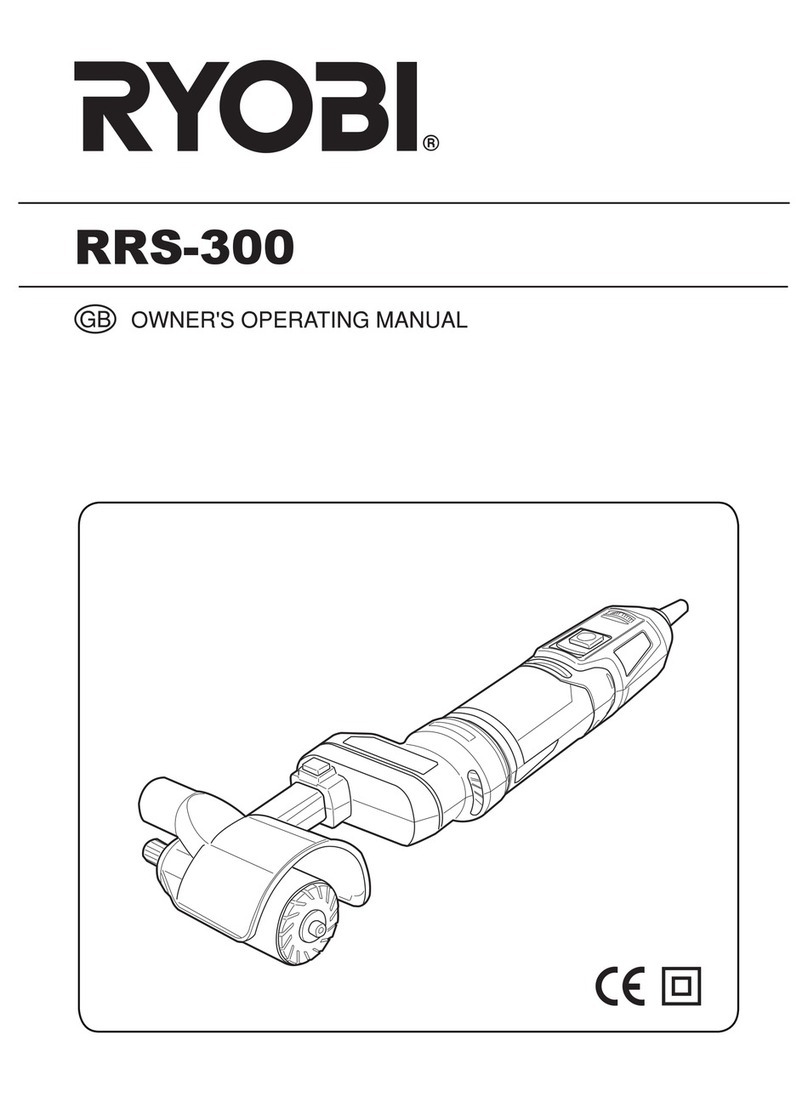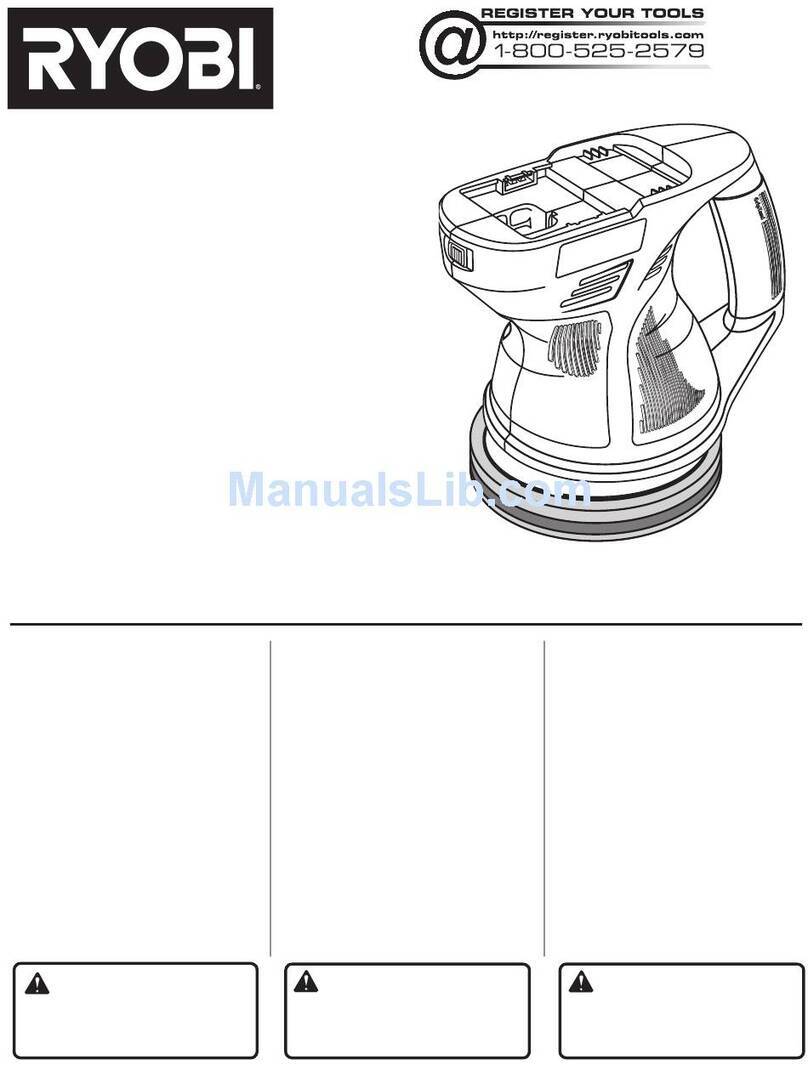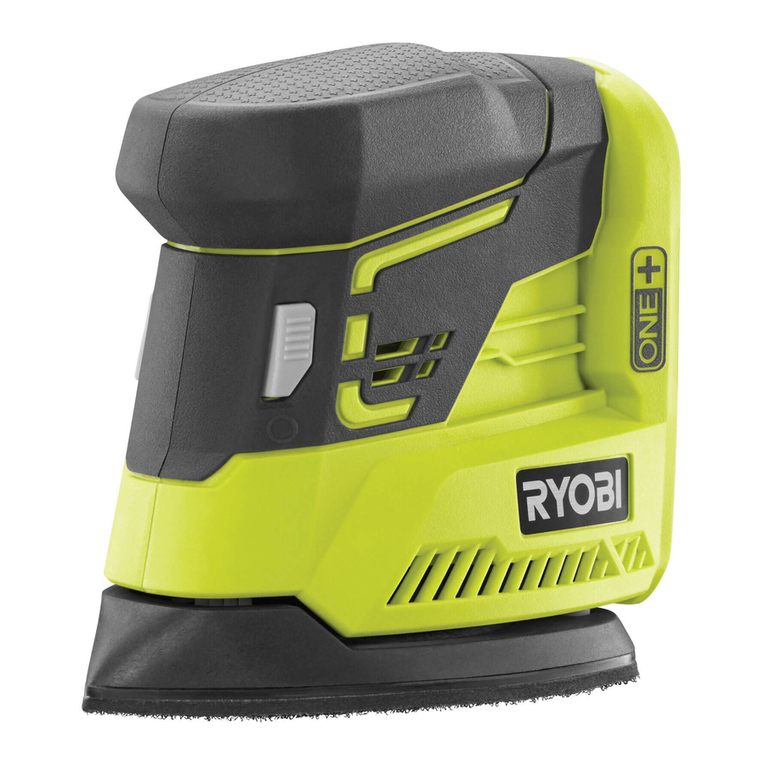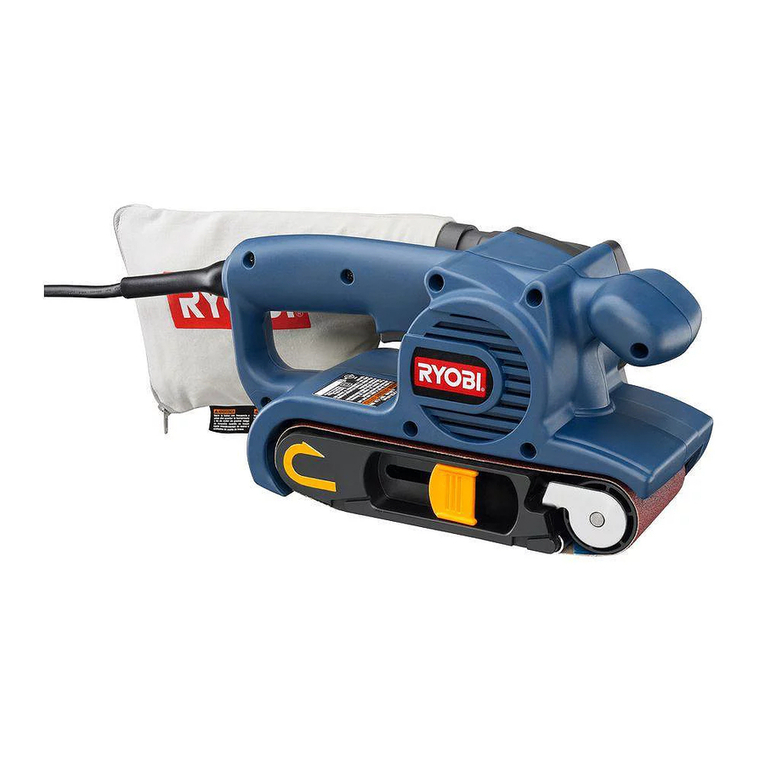
Page 2
WARNING:
Read and understand all instructions. Failure to
follow all instructions listed below, may result in
electric shock, fire and/or serious personal injury.
SAVE THESE INSTRUCTIONS
Work Area
■Keep your work area clean and well lit. Clut-
tered benches and dark areas invite accidents.
■Do not operate power tools in explosive
atmospheres, such as in the presence of
flammable liquids, gases, or dust. Power tools
create sparks which may ignite the dust or fumes.
■Keep bystanders, children, and visitors away
while operating a power tool. Distractions can
cause you to lose control.
Electrical Safety
■Double insulated tools are equipped with a
polarized plug (one blade is wider than the
other.) This plug will fit in a polarized outlet
only one way. If the plug does not fit fully in
the outlet, reverse the plug. If it still does not
fit, contact a qualified electrician to install a
polarized outlet. Do not change the plug in
any way. Double insulation eliminates the
need for the three wire grounded power cord and
grounded power supply system.
■Avoid body contact with grounded surfaces
such as pipes, radiators, ranges and refrigera-
tors. There is an increased risk of electric shock
if your body is grounded.
■Don’t expose power tools to rain or wet condi-
tions. Water entering a power tool will increase
the risk of electric shock.
■Do not abuse the cord. Never use the cord to
carry the tools or pull the plug from an outlet.
Keep cord away from heat, oil, sharp edges or
moving parts. Replace damaged cords imme-
diately. Damaged cords increase the risk of
electric shock.
■When operating a power tool outside, use an
outdoor extension cord marked “W-A” or “W”.
These cords are rated for outdoor use and reduce
the risk of electric shock.
Personal Safety
■Stay alert, watch what you are doing and use
common sense when operating a power tool.
Do not use tool while tired or under the influ-
ence of drugs, alcohol, or medication. A
moment of inattention while operating power tools
may result in serious personal injury.
■Dress properly. Do not wear loose clothing or
jewelry. Contain long hair. Keep your hair,
clothing, and gloves away from moving parts.
Loose clothes, jewelry, or long hair can be caught
in moving parts.
■Avoid accidental starting. Be sure switch is
off before plugging in. Carrying tools with your
finger on the switch or plugging in tools that have
the switch on invites accidents.
■Remove adjusting keys or wrenches before
turning the tool on. A wrench or a key that is left
attached to a rotating part of the tool may result in
personal injury.
■Do not overreach. Keep proper footing and
balance at all times. Proper footing and balance
enables better control of the tool in unexpected
situations.
■Use safety equipment. Always wear eye pro-
tection. Dust mask, nonskid safety shoes, hard
hat, or hearing protection must be used for
appropriate conditions.
Tool Use and Care
■Use clamps or other practical way to secure
and support the workpiece to a stable plat-
form. Holding the work by hand or against your
body is unstable and may lead to loss of control.
■Do not force tool. Use the correct tool for your
application. The correct tool will do the job better
and safer at the rate for which it is designed.
■Do not use tool if switch does not turn it on or
off. Any tool that cannot be controlled with the
switch is dangerous and must be repaired.
■Disconnect the plug from the power source
before making any adjustments, changing
accessories, or storing the tool. Such preven-
tive safety measures reduce risk of starting the
tool accidentally.
■Store idle tools out of reach of children and
other untrained persons. Tools are dangerous
in the hands of untrained users.
■Maintain tools with care. Keep cutting tools
sharp and clean. Properly maintained tools, with
sharp cutting edges are less likely to bind and are
easier to control.
■Check for misalignment or binding of moving
parts, breakage of parts, and any other condi-
tion that may affect the tools operation. If
damaged, have the tool serviced before using.
Many accidents are caused by poorly maintained
tools.
■Use only accessories that are recommended
by the manufacturer for your model. Accesso-
ries that may be suitable for one tool, may be-
come hazardous when used on another tool.
RULES FOR SALFE OPERATION
RULES FOR SAFE OPERATION
